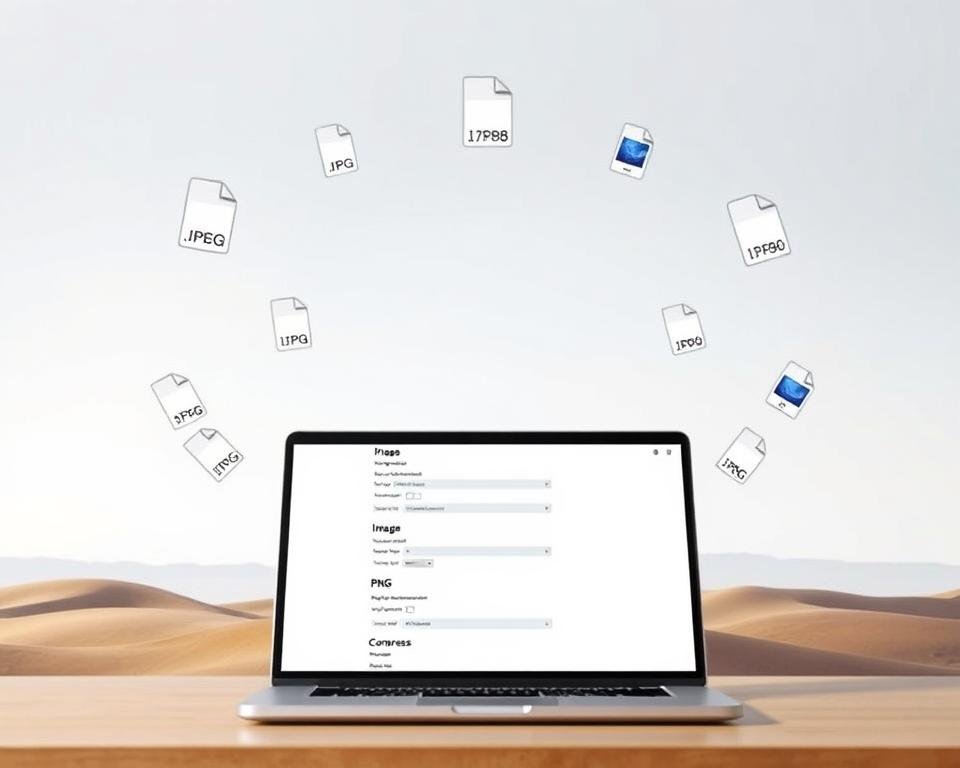I have come to realize that site speed plays a crucial role in determining your website’s search engine rankings. As I explore the world of Search Engine Optimization (SEO), it becomes evident that having a fast and efficient website is no longer a luxury, but a necessity.
In today’s digital landscape, a slow-loading website can significantly impact user experience and subsequently, your online presence. I will guide you through the process of optimizing your site speed, equipping you with the knowledge to boost your website’s performance.
Key Takeaways
- Understanding the importance of site speed in SEO
- Identifying factors that impact your website’s loading speed
- Techniques to optimize images and improve site performance
- Best practices for enhancing user experience through site speed
- Tools to measure and monitor your website’s speed
Understanding the Importance of Site Speed for SEO
Site speed optimization is not just a technical aspect; it’s a key element in enhancing user experience and conversion rates. As I delve into the importance of site speed for SEO, it becomes clear that search engines like Google evaluate site speed as part of their ranking algorithms.
A slow website can lead to higher bounce rates, negatively impacting your online presence. Therefore, understanding how search engines assess site speed is crucial for maintaining a competitive edge.
How Search Engines Evaluate Site Speed
Search engines use various metrics to evaluate site speed, including page load time, time to first byte (TTFB), and first contentful paint (FCP). These metrics provide insights into how quickly your website loads and becomes interactive for users.
Page load time is a critical metric, as it measures the time taken for your website to fully load. A faster page load time enhances user experience and is favored by search engines.
User Experience and Bounce Rates
A slow-loading website often results in higher bounce rates, as users tend to abandon sites that take too long to load. By optimizing site speed, you can significantly improve user experience, leading to lower bounce rates and higher engagement.
Reducing bounce rates through site speed optimization can have a positive impact on your website’s overall performance and search engine ranking.
The Impact on Conversion Rates
Site speed also has a direct impact on conversion rates. A faster website provides a better user experience, making it more likely for visitors to complete desired actions, such as making a purchase or filling out a form.
By improving site speed, you can increase conversion rates, ultimately leading to higher revenue and a stronger online presence.
Key Metrics to Measure Site Speed
Understanding the metrics that impact site speed is vital for optimizing your website’s performance. To improve your site’s speed, you need to measure and analyze its current performance. This involves tracking several key metrics that provide insights into how your site is performing and where improvements can be made.
Page Load Time
Page Load Time refers to the total time it takes for a web page to fully load. This metric is crucial because it directly affects user experience and search engine rankings. A slower page load time can lead to higher bounce rates and lower conversion rates. To optimize page load time, focus on optimizing images, minifying CSS and JavaScript files, and leveraging browser caching.
Time to First Byte (TTFB)
Time to First Byte (TTFB) measures the time it takes for a user’s browser to receive the first byte of data from your server. TTFB is an important metric because it indicates the responsiveness of your server. A high TTFB can negatively impact user experience and SEO. To improve TTFB, consider optimizing your server configuration, using a content delivery network (CDN), and choosing a reliable hosting provider.
First Contentful Paint (FCP)
First Contentful Paint (FCP) measures the time it takes for the browser to render the first contentful element on the page, such as text or an image. FCP is a critical metric because it affects how quickly users perceive your page as loading. To enhance FCP, focus on optimizing your critical rendering path, minimizing CSS and JavaScript, and ensuring that your page’s initial content is prioritized.
Key metrics to measure site speed include:
- Page Load Time
- Time to First Byte (TTFB)
- First Contentful Paint (FCP)
By monitoring and optimizing these metrics, you can significantly improve your website’s performance and user experience. Regularly testing and refining your site based on these metrics will help ensure that your site remains competitive and provides a fast, seamless experience for your users.

Tools to Test Your Site Speed
With the right tools, you can analyze your site’s speed and make necessary adjustments for optimal performance. Testing your site speed is a crucial step in identifying areas that need improvement to achieve SEO-friendly site speed.
Several tools are available to help you assess your website’s performance. Here, I’ll introduce you to some of the most popular ones.
Google PageSpeed Insights
Google PageSpeed Insights is a widely used tool that analyzes your website’s performance on both desktop and mobile devices. It provides a score based on your site’s speed and offers suggestions for improvement.
Key features of Google PageSpeed Insights include:
- Performance scoring
- Optimization suggestions
- Mobile and desktop analysis
GTmetrix
GTmetrix is another powerful tool that evaluates your site’s speed and provides recommendations for improvement. It combines the insights from Google PageSpeed and YSlow, offering a comprehensive analysis.
GTmetrix’s key features include:
- Page speed and performance scores
- Waterfall chart analysis
- Optimization recommendations
WebPageTest
WebPageTest is a tool that allows you to test your website’s performance from different locations around the world. It provides detailed information on your site’s load time, first byte time, and other performance metrics.
WebPageTest’s key features include:
- Global testing locations
- Detailed performance metrics
- Advanced testing options
Optimizing Images for Faster Load Times
Optimizing images is crucial for improving site speed, which in turn boosts SEO with faster site speed. Images are a vital part of web design, enhancing user experience and engagement. However, if not optimized, they can significantly slow down your website. By optimizing your images, you can reduce their file size, resulting in faster load times and an improved overall user experience.
Choosing the Right File Format
The file format of your images plays a significant role in their size and quality. Different formats serve different purposes. For instance, JPEG is ideal for photographs as it supports a wide range of colors, while PNG is better suited for graphics and images that require transparency. WebP is a modern format that offers superior compression and is supported by most modern browsers.

Image Compression Techniques
Image compression reduces the file size of your images without significantly affecting their quality. There are two types of compression: lossless and lossy. Lossless compression retains the original quality of the image, while lossy compression discards some data to achieve a smaller file size. Tools like TinyPNG and ImageOptim can help compress your images effectively.
Responsive Images
Using responsive images ensures that your images are scaled appropriately for different devices and screen sizes. This can be achieved using the srcset attribute in HTML, which allows you to specify different image sizes for different screen resolutions. By serving the right image size, you can reduce the file size and improve load times on mobile devices.
By implementing these image optimization techniques, you can significantly improve your site’s load times, enhancing both user experience and SEO. Regularly reviewing and optimizing your images is a crucial step in maintaining a fast and efficient website.
Utilizing Browser Caching Effectively
Utilizing browser caching effectively can significantly boost your site’s performance. Browser caching is a technique that allows web browsers to store frequently-used resources locally, reducing the need for repeat requests to the server. This results in faster page loads and an improved user experience, which are critical site speed factors for SEO.
How Browser Caching Works
When a user visits your website, their browser downloads various resources such as images, CSS files, and JavaScript files. With browser caching enabled, these resources are stored locally on the user’s device. The next time the user visits your site, the browser can load these resources from the local cache instead of requesting them from your server again, thereby reducing the load time.

Configuring Expire Headers
Configuring expire headers is a crucial step in leveraging browser caching. Expire headers tell the browser how long to cache a resource before it expires. By setting appropriate expiration dates, you can control how long resources are cached, ensuring that users see updated content when necessary.
To configure expire headers, you need to modify your server configuration files. For Apache servers, you can do this by editing the .htaccess file. For example, you can add the following code to set the expiration for different types of files:
| File Type | Expiration Period |
|---|---|
| Images | 1 year |
| CSS and JavaScript files | 1 month |
| HTML files | 1 day |
Recommended Caching Plugins
If you’re not comfortable editing server configuration files, there are several caching plugins available that can help you leverage browser caching. Some popular options include:
- W3 Total Cache
- WP Super Cache
- WP Rocket
These plugins provide an easy-to-use interface for configuring caching settings, including expire headers, without requiring technical expertise.
By effectively utilizing browser caching, you can significantly improve your site’s speed and performance, enhancing the overall user experience and improving your search engine rankings.
Minimizing HTTP Requests
Reducing the number of HTTP requests can significantly improve your website’s speed and search engine rankings. When a user visits your site, their browser sends an HTTP request to your server for each element on the page, including images, CSS files, and JavaScript files.
These requests can add up quickly, leading to slower load times and a poor user experience. By minimizing the number of HTTP requests, you can improve your site’s performance and provide a better experience for your users.
Understanding HTTP Requests
An HTTP request is a message sent by a user’s browser to your server, asking for a specific resource. The server then responds with the requested resource, which is then rendered by the browser. The more resources your page requires, the more HTTP requests are made, resulting in slower load times.
Key components that contribute to HTTP requests include:
- Images
- CSS files
- JavaScript files
- Fonts
- Other media
Combining Files: CSS and JavaScript
One effective way to minimize HTTP requests is by combining multiple CSS and JavaScript files into fewer files. This reduces the number of requests made to your server, resulting in faster load times.
For example, instead of having multiple CSS files for different sections of your site, you can combine them into a single file. Similarly, you can merge multiple JavaScript files into one.
| File Type | Before Optimization | After Optimization |
|---|---|---|
| CSS Files | 5 | 1 |
| JavaScript Files | 7 | 2 |
| Total HTTP Requests | 12 | 3 |
Using Sprites for Images
Another technique for reducing HTTP requests is by using image sprites. An image sprite is a single image that contains multiple smaller images.
By using CSS to display the desired portion of the sprite, you can reduce the number of HTTP requests made for images. This technique is particularly useful for icons and other small graphics.

By implementing these strategies, you can significantly reduce the number of HTTP requests made by your site, resulting in improved load times and a better user experience.
Reducing Server Response Time
Improving server response time is essential for providing a seamless user experience and boosting your site’s speed. A slow server response can lead to higher bounce rates and negatively impact your search engine rankings.
Choosing the Right Hosting Provider
Your hosting provider plays a significant role in determining your server’s response time. Opt for a reputable hosting service that offers high-performance servers and reliable uptime. Consider factors such as server location, hardware quality, and customer support when making your decision.
Utilizing a Content Delivery Network (CDN)
A Content Delivery Network (CDN) can significantly reduce server response time by distributing your content across multiple geographic locations. This means that users can access your site’s resources from a server that is closer to their location, resulting in faster load times.

Optimizing Server Configuration
Optimizing your server configuration is critical for reducing response times. This includes tuning server settings, enabling keep-alive, and using HTTP/2. Additionally, consider implementing database optimization techniques to improve query efficiency and reduce latency.
| Optimization Technique | Description | Impact on Server Response Time |
|---|---|---|
| Choosing the Right Hosting Provider | Selecting a high-performance hosting service | Significant reduction in response time |
| Utilizing a CDN | Distributing content across multiple locations | Reduces latency and response time |
| Optimizing Server Configuration | Tuning server settings and enabling HTTP/2 | Improves server efficiency and reduces response time |
Streamlining CSS and JavaScript
To improve your site’s loading times, it’s essential to streamline your CSS and JavaScript files effectively. Optimizing these files can significantly reduce their size, resulting in faster load times and an improved user experience.
Minification Techniques
Minification involves removing unnecessary characters from your CSS and JavaScript files, such as whitespace, comments, and newline characters, to reduce their size. This process can be achieved using various tools and plugins available online.
Some popular minification tools include:
- Gzip compression
- UglifyJS for JavaScript
- CSSNano for CSS
By minifying your CSS and JavaScript files, you can achieve significant reductions in file size, leading to faster page loads.
| Minification Technique | Description | File Type |
|---|---|---|
| Gzip Compression | Compresses files to reduce size | CSS, JavaScript, HTML |
| UglifyJS | Removes unnecessary characters from JavaScript files | JavaScript |
| CSSNano | Minifies CSS files | CSS |
Defer and Async Loading
Defer and async loading are techniques used to optimize the loading of JavaScript files. Deferring a script loads it after the HTML document has been parsed, while async loading allows the script to load in parallel with the HTML document parsing.
Using these techniques can significantly improve your site’s load times by ensuring that critical resources are loaded first.

Removing Unused Code
Removing unused CSS and JavaScript code is another effective way to streamline your files. Unused code can accumulate over time due to updates, changes in design, or removal of features.
To identify and remove unused code, you can use tools like:
- Chrome DevTools Coverage tab
- UnusedCSS
- PurifyCSS
By regularly auditing and cleaning up your CSS and JavaScript files, you can maintain optimal performance and ensure that your site continues to load quickly.
Implementing Lazy Loading for Media
To increase website speed, one effective method is to implement lazy loading for media content. This technique has gained popularity as a means to optimize website performance by delaying the loading of non-essential media until it comes into view.
What is Lazy Loading?
Lazy loading is a strategy used to defer the loading of non-critical resources, such as images and videos, until they are needed. This means that content below the fold, or not currently visible to the user, is not loaded until the user scrolls down to it.
How Lazy Loading Boosts Speed
By implementing lazy loading, you can significantly reduce the initial payload of your webpage, leading to faster load times. This is because the browser doesn’t need to load all the media at once, thus reducing the amount of data transferred and improving the overall user experience.

Implementing Lazy Loading on Your Site
To implement lazy loading on your website, you can follow these steps:
- Identify the media content that is not critical to the initial load.
- Use JavaScript libraries or plugins that support lazy loading.
- Configure the lazy loading script to load media as it comes into view.
- Test your website to ensure that lazy loading is working correctly and not affecting the user experience negatively.
By following these steps and leveraging lazy loading, you can optimize your website’s performance and provide a faster, more seamless experience for your users.
Regular Maintenance for Optimal Performance
To keep your website running at its best, regular maintenance is crucial. This involves a series of tasks that help ensure your site remains fast, secure, and SEO-friendly, ultimately boosting your online presence.
Keeping Themes and Plugins Updated
Updating themes and plugins is essential for maintaining security and performance. Outdated themes and plugins can lead to vulnerabilities and slow down your site. Regular updates help you stay ahead of potential issues.
The Importance of Speed Audits
Conducting regular speed audits helps identify areas for improvement. Tools like Google PageSpeed Insights and GTmetrix provide valuable insights into your site’s performance, allowing you to make data-driven decisions to boost SEO with faster site speed.
Staying Current with SEO Best Practices
SEO is a constantly evolving field, with search engines regularly updating their algorithms. Staying informed about the latest SEO best practices ensures your site remains optimized for search engines, maintaining an SEO-friendly site speed that supports your online presence.
By incorporating these maintenance tasks into your routine, you can ensure your website continues to perform optimally, supporting your SEO efforts and overall online success.
